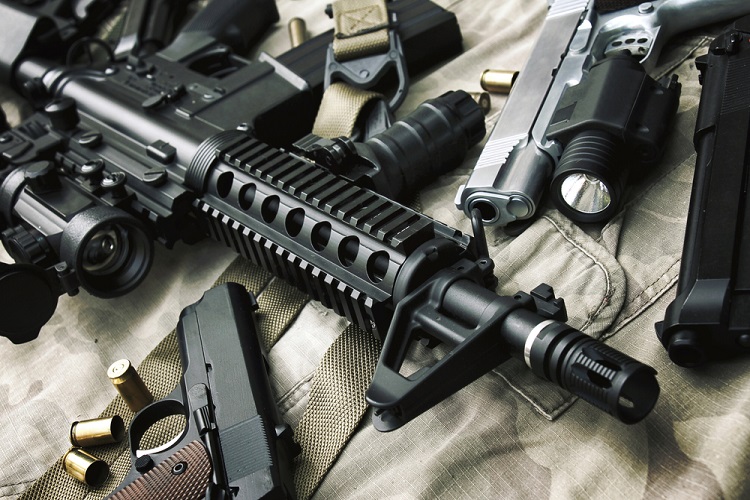Firearm trigger modifications have been a subject of controversy and fascination among gun enthusiasts, hobbyists, and professionals alike. The trigger mechanism is a critical component of any firearm, directly influencing accuracy, control, and safety. While factory triggers are designed to meet certain standards, many gun owners seek to customize them to suit their preferences and needs. However, this customization raises questions about legality, safety, and ethical considerations. Here, we delve into the world of firearm trigger modifications, exploring the techniques, benefits, risks, and ethical implications associated with altering trigger mechanisms.
Table of Contents
Understanding Firearm Triggers:
Before delving into modifications, it’s essential to understand the basic mechanics of firearm triggers. A trigger is a mechanism that initiates the firing sequence of a firearm. It typically consists of several components, including the trigger itself, sear, hammer, and spring. When the trigger is pulled, it releases the sear, allowing the hammer to strike the firing pin or primer, igniting the cartridge and firing the gun.
Types of Trigger Modifications:
Firearm enthusiasts can modify triggers in various ways to enhance performance or customize the feel of the trigger pull. Some common modifications include:
- Trigger Weight Adjustment: This involves altering the tension of the trigger spring to change the amount of force required to pull the trigger. Decreasing trigger weight can result in a lighter, smoother pull, while increasing it can enhance safety by preventing accidental discharges.
- Trigger Reset Optimization: Modifying the trigger reset point can improve follow-up shot accuracy and speed by reducing the time between shots. This modification is popular among competitive shooters and tactical professionals.
- Trigger Shape and Ergonomics: Changing the shape, size, or texture of the trigger can improve comfort and control, especially for shooters with specific hand sizes or preferences. Ergonomic modifications aim to reduce fatigue and improve overall shooting experience.
- Trigger Overtravel and Creep Reduction: Overtravel refers to the distance the trigger travels after the sear releases, while creep refers to the perceived resistance before the trigger breaks. Minimizing overtravel and creep can enhance precision and consistency in trigger control.
- Drop-In Trigger Kits: Aftermarket drop-in trigger kits offer a convenient way to upgrade factory triggers with pre-assembled components. These kits often include adjustable triggers, sears, springs, and other parts designed to improve performance and reliability.
Benefits of Trigger Modifications:
Proponents of trigger modifications argue that these enhancements offer several benefits, including:
- Improved Accuracy: A smoother, lighter trigger pull with reduced overtravel and creep can enhance shooter accuracy and consistency, especially at longer distances.
- Enhanced Performance: Trigger modifications can improve firearm performance in competitive shooting, hunting, and tactical applications by optimizing trigger control and reset.
- Customization: Trigger modifications allow shooters to tailor their firearms to their preferences, including trigger weight, feel, and ergonomics, resulting in a more personalized shooting experience.
- Increased Safety: While controversial, some trigger modifications, such as reducing trigger weight or creep, can potentially enhance safety by promoting better trigger discipline and reducing the likelihood of negligent discharges.
Glock Performance Trigger
When it comes to Glock pistols, one of the most popular firearms in the world, trigger modifications are particularly common. Glock owners often seek to enhance the performance of their pistols by customizing the trigger. Aftermarket Glock performance trigger offers various improvements, including reduced trigger pull weight, shorter reset, and improved ergonomics. These modifications can make Glock pistols more competitive in shooting sports and more comfortable to shoot for extended periods.
Risks and Ethical Considerations:
Despite the potential benefits, trigger modifications also pose certain risks and ethical considerations that must be taken into account:
- Legal Implications: Depending on local laws and regulations, certain trigger modifications may be illegal or subject to restrictions. It’s essential for gun owners to familiarize themselves with relevant firearms laws before making any modifications.
- Safety Concerns: Altering trigger mechanisms can compromise firearm safety if not done properly. Modifications that reduce trigger weight or safety features may increase the risk of accidental discharges, particularly in inexperienced hands.
- Warranty Voidance: Many firearm manufacturers void warranties for guns that have been modified, including trigger alterations. Gun owners should weigh the potential benefits of modifications against the risk of voiding the warranty and consider seeking professional installation or consulting with manufacturers beforehand.
- Ethical Considerations: Some argue that certain trigger modifications, particularly those aimed at maximizing performance or firepower, may be ethically questionable, especially in the context of civilian firearm ownership. It’s important for gun owners to consider the intended use of their firearms and the potential consequences of modifications on safety and society.
Conclusion:
Firearm trigger modifications offer gun owners the opportunity to customize their firearms for improved performance, comfort, and control. From adjusting trigger weight and reset to enhancing ergonomics and reducing overtravel, there are numerous ways to tailor triggers to individual preferences. However, it’s crucial to approach trigger modifications with caution, considering the legal, safety, and ethical implications involved. By balancing the potential benefits with the associated risks, gun owners can make informed decisions about whether and how to modify their firearm triggers. Ultimately, responsible firearm ownership requires a commitment to safety, legality, and ethical conduct, regardless of the extent of modifications undertaken.

